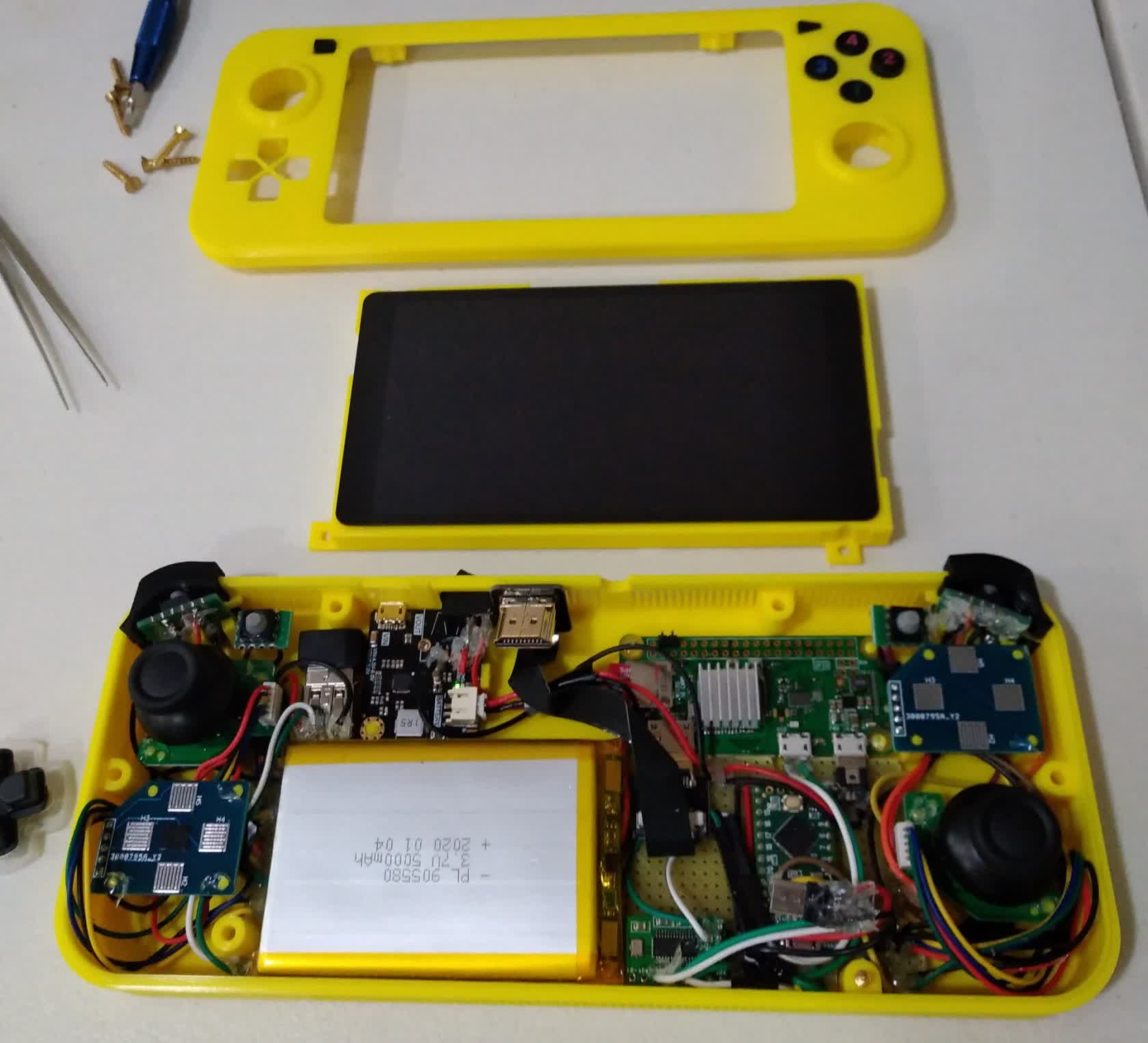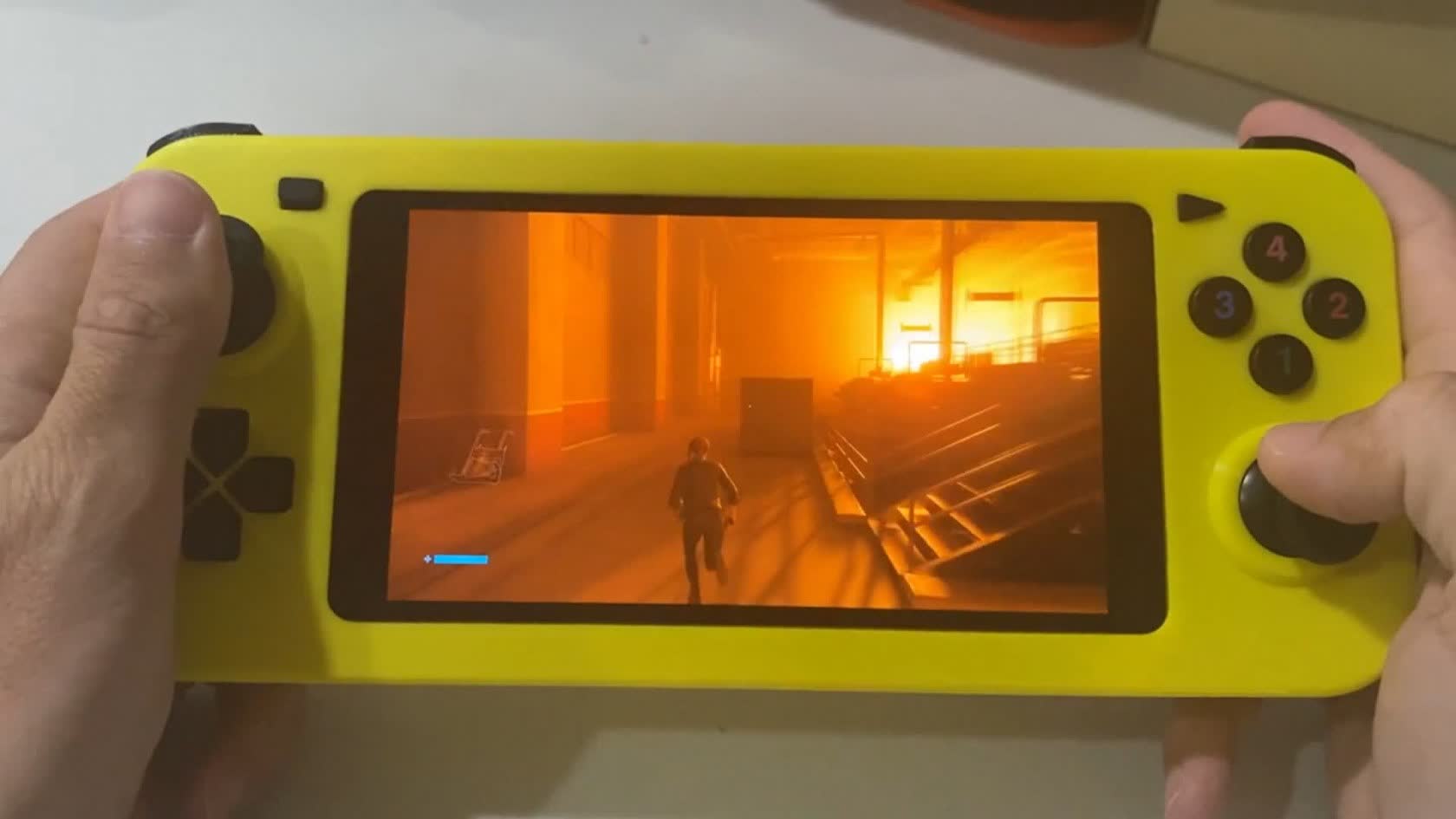In context: PC gaming has come along way over the past few years, both in terms of its userbase and accessibility. Thanks to the efforts of companies like GPD (the creator of the well-known GPD Win handheld PCs), we can even bring our full-fat PC games with us on the go, albeit with some compromises in the performance department.
However, what if you want a mobile gaming experience without giving up performance or graphical fidelity? That's a question Redditor Tombston asked and answered for himself a couple months ago.
The crafty user took the time to fashion his own Raspberry Pi Zero W-based game streaming handheld, which he's dubbed "Lemonlight."
On the surface, the custom device resembles a Nintendo Switch Lite. However, from what we can tell, there isn't a single Switch component here – on the exterior, there's a host of Dual Shock knockoff buttons, two Wii U analog sticks, and a 3d-printed shell.
Under the hood, you'll find a 5,0000 mAh battery pack bundled with an AC600 WiFi dongle, a 1080p, 5.5-inch Waveshare AMOLED display, and a handful of other miscellaneous parts that help the unit function.
The device uses Moonlight, an "open source implementation of Nvidia's GameStream protocol," to let Tombston (and other users) run their PC games remotely, without direct access to their gaming rig.

Moonlight supports up to 120 FPS, 4K streaming, provided your connection and streaming device can handle that sort of fidelity. In Tombston's case, his creation doesn't quite hit that level, but it can still support 1080p, 60 FPS gaming, which is nothing to scoff at for such a small gadget.
This device is actually version 2 of Tombston's original handheld, which was considerably clunkier and, by the user's own admission, a "basically a rats nest" on the inside. The new version is more streamlined and quite a bit cleaner, which you can see in the image above.
Sadly, if you want to follow in Tombston's footsteps, you'll have to fly blind. The Redditor has no plans to create a tutorial of any kind, but they have kindly provided the STL files for their components (which you can 3D print) right here.
Still, even without a tutorial, it's fascinating to see what hardware hackers can come up with when they have enough time and energy on their hands. Tombston's success with Lemonlight might just inspire others to create their own similar devices in the future – if so, we look forward to seeing those as well.
